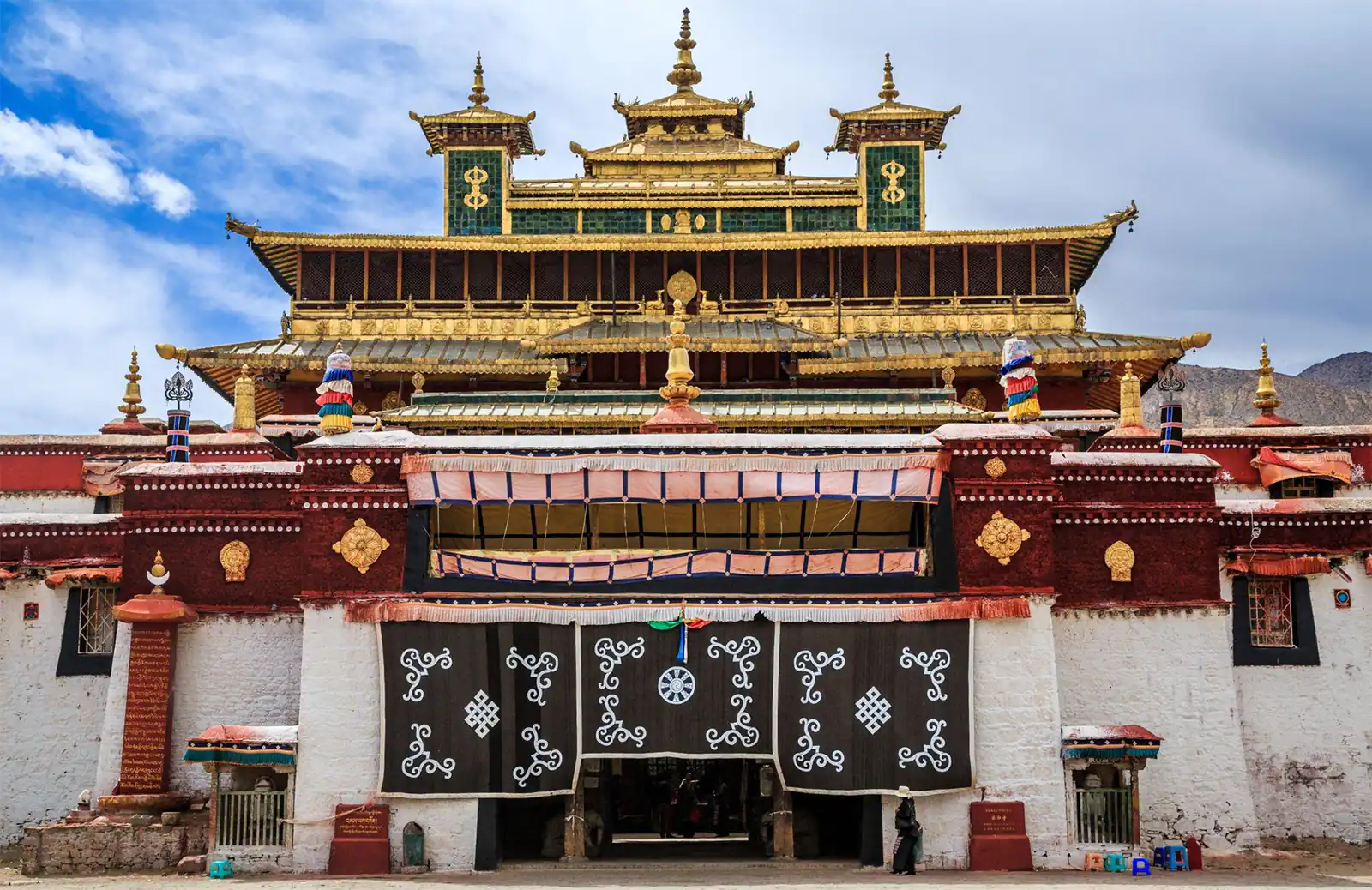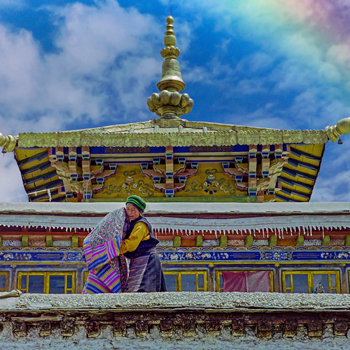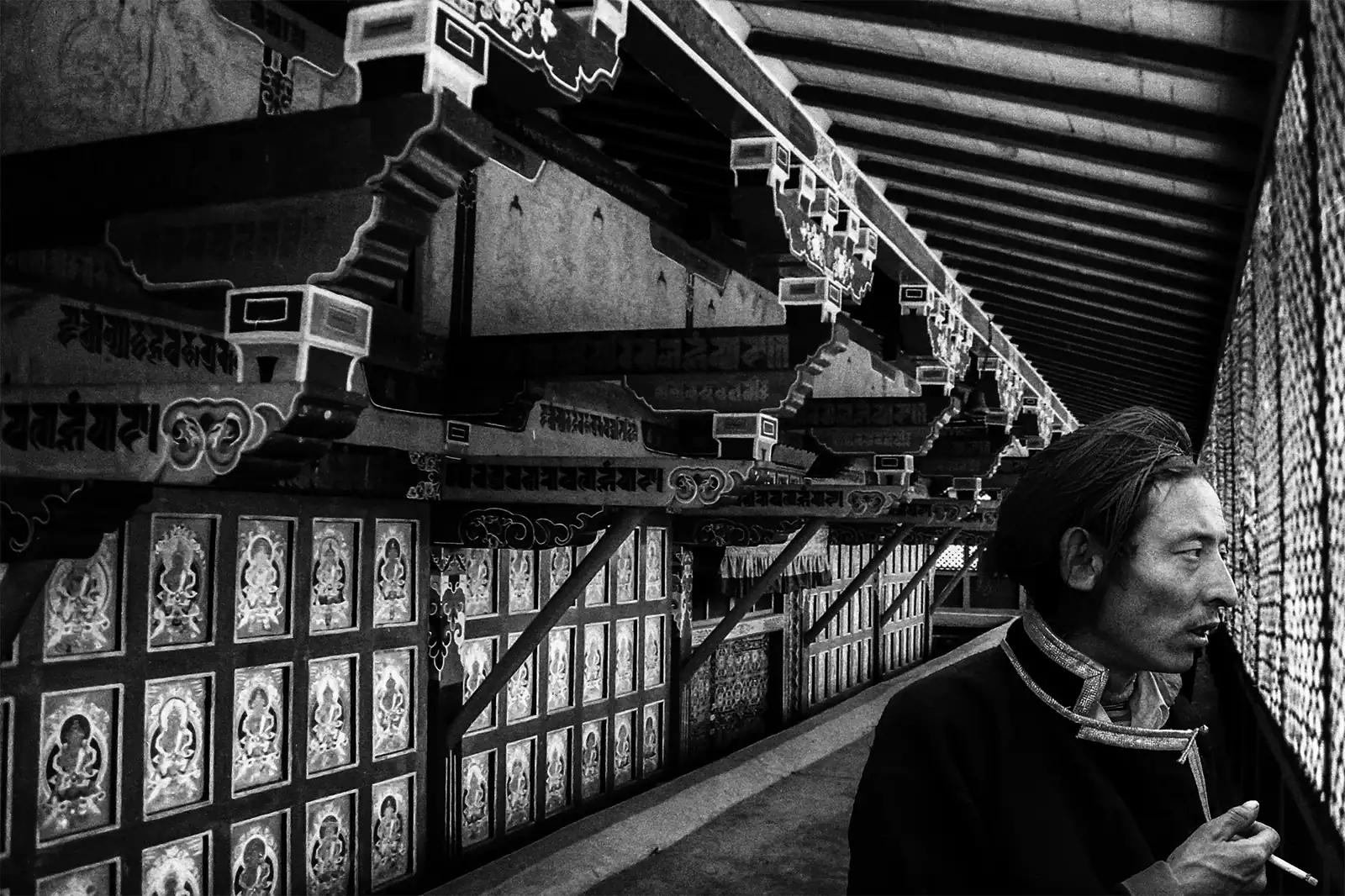Samye Monastery – First monastery in Tibet
- Sunday April 9, 2023
- 0
Samye Monastery is an iconic and ancient Tibetan Buddhist monastery in the Chimpu valley (Mchims phu), south of Lhasa, next to the Hapori mountain in the Yarlung Valley. The monastery was the first Buddhist monastery in Tibet and has remained an important part of Tibetan and Buddhist culture. As one of the most vital pilgrimage sites in the region, the monastery sees thousands of visitors each year who come to experience its unique history and spirituality.
In this blog post, we will take a closer look at the monastery’s history, culture, architecture, and spiritual impact on the people of Tibet and beyond. We will explore the significance of the monastery and the many wonders that it holds within its walls. So, come along as we journey to Samye Monastery, and explore one of its great treasures.
Samye Monastery History
The majestic Samye Monastery stands as a beacon of Buddhist history, having been the very first temple in Tibet to exhibit the many characteristics of traditional Indian temple construction. In the 8th century, during the reign of King Trisong Detsen of the Tubo dynasty, the Samye Monastery was established. The monastery was a hub for various Buddhist studies and practices, including studying Buddhist Sutras and Tantras, Sanskrit, logic, archaeology, medicine, astrology, poetry, terminology, and other disciplines. The precise date of the monastery’s founding is uncertain, with estimates ranging from 765 to 780 AD. However, it was made possible with the help of King Trisong Detsen and the great saint Santarakshita and the tantric master Padmasambhava.
The foundation of Samye marked the earliest endeavor by Buddhism to gain footing in Bons-governed Tibet. It was met with resistance from members of the royal court who followed the Bon-po religion, yet the monastery was constructed despite this.
At the dawn of the 9th century, King Trisong Detsen welcomed medical professionals and scientists from across the region to the monastery of Samye. Here, he convened the first medical congress, providing a platform to cultivate the tradition of Tibetan classical medicine.
Myths of the Monastery
The mysterious origins of the monastery have long been shrouded in legend, as tales of Bon demons who sought to destroy the walls being built began to spread. Eventually, it is said that the construction was initiated by the monk Shantarakshita of the Indian monastery Nalanda, who was a strong believer in sutra Buddhism. Although his efforts were met with a setback, when the building collapsed, King Trisong Detsen invited the powerful tantric master and magical mahasiddha Padmasambhava to the site. After arriving in Tibet, Padmasambhava took a new wife, Yoshe Tsogel, and they finally completed the monastery together.
Architecture and layout of Samye monastery
The beautifully intricate Samye Monastery was constructed as a magnificent mandala. Borrowing architectural styles from India, Tibet, and China, it was modeled after the Udantapuri Temple, created following the three Buddhist scriptures – the Vinaya Pitaka, Sutra Pitaka, and Abhidharma Pitaka. The centerpiece of this holy site is Mount Meru, encircled by four continents and embellished with the sun and moon.
The Samye mandala is home to the remarkable Central Temple of Utze, an awe-inspiring three-story structure representing the legendary Mount Meru. Each floor is a unique testament to the architecture of different cultures, with Tibetan, Chinese, and Indian styles all represented. You’ll find many statues of great Buddhist monks and saints within, culminating with the 8th-century statue of Shakyamuni, the young Buddha himself.
The majestic central temple stands, surrounded by structures representing the four continents, the sun, and the moon. To the east is the Temple of Manjushri, to the south the Temple of Hayagriva, to the west the Temple of Maitreya, and the north the Temple of Bodhisattvas. Flanking the four directions are two shrines, representing the eight subcontinents. To the east, admire the Namthak Trimkangling Temple and Dhajor Tsangmangling Temple.
The majestic monastery stands atop the mountain with temples of the Sun and Moon adorning the north and south entrances. On the west side lies Lungten Vejaling Temple, devoted to Vairochana, and Miyo Samtenling, a place of still meditation and worship of Akshobhya. To the south, Dhudul Ngakpaling and Dragyur Gyakarling Temples offer tantric rituals and Sanskrit translations, while to the north, Renchen Natsokling and Pehar Kordsoy Temples display their multiple glimmering gems. In the center, four chortens of different colors stand, representing the four cardinal directions. Long ago, twelve more temples surrounded the monastery, each based on the Buddhist cosmology of the continents.
The monastery complex hosts several stunning chapels, such as Dzogchen Lhakang (great perfection), Ngotsar Thupehenling (amazing chapel), Dzogchen Korchen Mani Lhakang (high perfection and six-syllable mantra cell), Mipham Chodsinling (chapel of the indomitable Dharma holder), and other sacred sites. Within these sacred spaces, one can find precious artworks from antiquity, including thangka paintings, statues of spiritual leaders, and ancient texts. The walls of these chapels feature incredibly stunning frescoes, both original and restored, that tells the story of Tibet’s past.
A relic from the bygone era, the ancient bronze bell ringing from the 7th century still hangs in the temple’s main gate. The temple complex of Samye is encircled by a wall of beauty, studded with 1,028 intricate stupas perched atop its perimeter.
Three fascinating temples lay just beyond the fence: Kamsum Sangkangling (Copper Palace of the Three Lands) has been repurposed as a granary. The ruins of Gegyey Lima Lhakang (Bronze Palace of Virtues) remain. Wutsal Serkangling (Golden Palace of the Middle Earth) is now an elementary school for the nearby village.
During its colorful legacy, Samye has experienced numerous transformations and revivals. Indeed, the “cultural revolution” caused the most significant destruction in recent memory. By the close of the 1980s, Nyingma teacher Dilgo Khyentse Rinpoche was able to restore and bless the monastery.
Final words
Samye Monastery is a unique gem of history, culture, and architecture. Its unique blend of Buddhism, Bon, and Hinduism and its rich legacy of artwork make it an important pilgrimage site for Buddhist followers worldwide. Even though the monastery has suffered from destruction, it’s important history and cultural significance remain unaltered over time. Samye Monastery is a must-visit destination that should not be missed.








